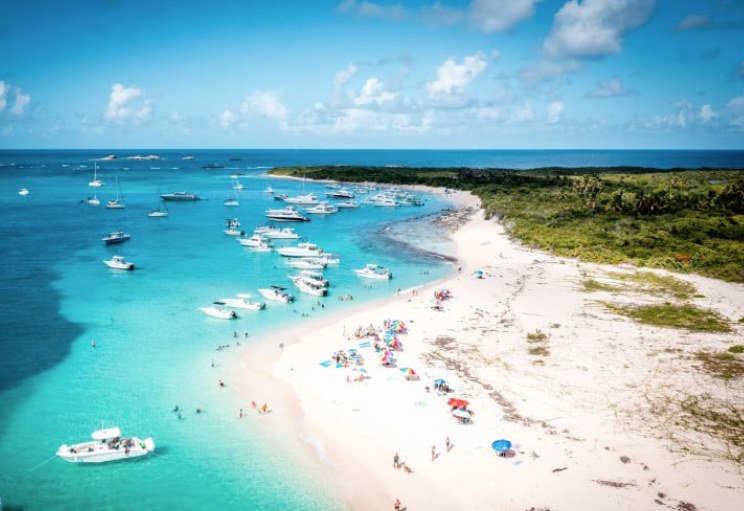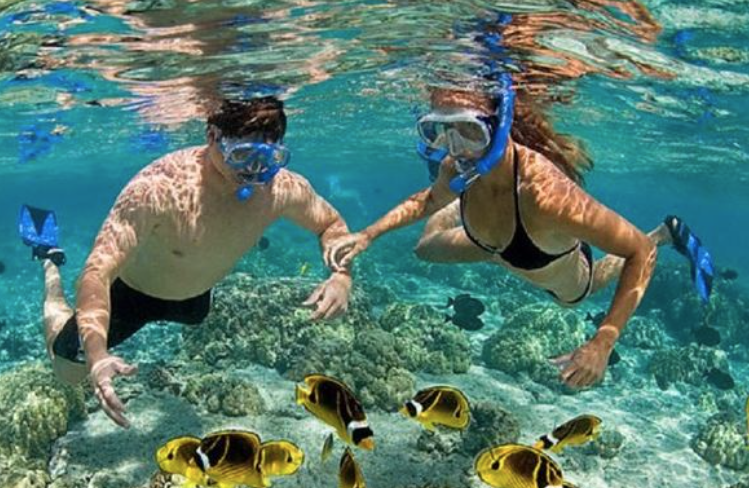The History of Puerto Nuevo Beach and Its Surroundings

On Puerto Rico’s north coast in the municipality of Vega Baja, Puerto Nuevo Beach curves around a shallow, emerald pool protected by a dramatic natural limestone wall locals call la pared. Families know it for calm water on many days; photographers know it for wave plumes exploding against jagged rock; and old-timers remember when fishing dories used the shelter of this very cove. The beach’s past is a dialogue between geology and community—karst stonelifting from the Atlantic, and coastal residents shaping a shoreline into a public treasure.
Karst, Reefs, and a Natural Breakwater
Puerto Nuevo’s signature feature is the ancient limestone ridge rising just offshore. Part of the island’s extensive karst belt, the formation was sculpted by rain, waves, and time into honeycombed ledges and caves. Where the ridge meets the sea, it acts like a natural jetty: long-period swells that rumble along the Atlantic are fractured into splash and spray, while the nearshore water behind the wall often stays glassy and shallow. Sandy fingers drift in and out with the seasons, but the rock remains the constant, explaining why generations of locals learned to swim here and why the beach can be safe even when open-ocean surf is roaring just beyond.
From Working Cove to Community Shoreline
Before lifeguard towers and paved walkways, the cove served as a functional edge for nearby neighborhoods. Fishermen launched skiffs during morning lulls, hauled traps, and dried nets under sea-grape shade. Vega Baja’s inland farms supplied plantains and root crops, while the coast delivered protein; the market town and the beach were two halves of the same day. Weekend gatherings grew around church calendars and family reunions, and the cove naturally evolved into a communal plaza—no walls, just tide, sand, and the familiar percussion of waves breaking on limestone.
Roads, Recreation, and the Balneario Model
The mid-20th century brought better roads along the north shore, connecting Vega Baja more directly to San Juan and Arecibo. As car culture spread, Puerto Rican planners formalized popular beaches into managed balnearios with lifeguards, showers, and picnic groves. Puerto Nuevo’s protected pool made it an obvious candidate: safe entry points for children, shallows for waders, and open exposure for sea breezes. Infrastructure followed—parking areas, kiosks, and later accessible paths—codifying the beach’s identity as a family destination while preserving its working-waterfront roots. The result was a textbook “people’s beach,” the kind of place where three generations could spend a Sunday without driving far.
Waves Next Door: Los Tubos and Surf Culture
Not every corner of Puerto Nuevo is quiet. A short stretch west, the famous break at Los Tubos harnesses winter swells into fast, hollow waves that helped animate Puerto Rico’s surf scene from the 1960s onward. While small kids squeal in the pool behind the rock wall, older siblings carry boards toward the stronger water. That juxtaposition—protected cove beside powerful surf—shaped the area’s culture: lifeguards learned two coastlines at once, snack shacks stocked both snow cones and post-session empanadillas, and visiting photographers could shoot family snapshots in the morning and barrels by afternoon.
Storm Lessons and Community Resilience
North-coast beaches always negotiate with hurricanes, and Puerto Nuevo is no exception. Big storms have rearranged dunes, toppled shade trees, and tested the beach’s paths and pavilions. After each season, neighbors, municipal crews, and volunteer groups patch what wind and salt unstitched—replanting sea grapes, reinforcing access points, and hauling debris from the lagoon-like shallows. The limestone wall, pitted and sharp, bears the history in its contours; the community bears it in muscle memory. Recovery days are as much a part of local heritage as festival days, and they remind visitors that calm water is a gift the ocean lends, not a promise it guarantees.
Safety, Access, and Everyday Stewardship
Public investment brought lifeguard stands, clear signage, and designated swimming zones that adapt to conditions. On rough days, you may see flags up and ladders closed; on gentle days, families fan out across the pool, toddlers chase minnows, and snorkelers peek at rocky corners when visibility allows. Paths and boardwalks help keep feet off fragile dunes so the sand can do its job buffering wind and tide. Small habits add up: packing out trash, using reef-safe sunscreen, and giving wildlife space—particularly when sea turtles or shorebirds claim the wrack line.
Food, Music, and the Social Beach
As Puerto Nuevo grew into a full-fledged day-trip destination, food culture followed. Weekends bring the aromas of pinchos on the grill, shaved-ice syrups, and fried favorites like alcapurrias and bacalaítos. Portable speakers soundtrack volleyball games and birthday tents, while fishermen compare catches near the rocks at day’s end. The mood is festive but rooted: this is a neighborhood beach with regional reach, where San Juan families and central mountain towns meet Vega Baja regulars on the same tide schedule.
Reading the Shoreline Like a Timeline
To visit today is to trace layers. Start at the overlook where spray vaults over the limestone and you feel the Atlantic’s pulse. Walk down to the pool and notice how the water slackens—geology turning force into foam, then into calm. Watch a small boat angle through the gap for an echo of the cove’s working past. Follow the paved path and you’ll read the balneario era in rinse stations and shelters. Turn west at sunset and see surfers silhouetted over Los Tubos, a modern chapter written on the same page of coast. Each step links natural engineering to human adaptation.
Why the Past Matters for the Next Swim
Understanding Puerto Nuevo’s history clarifies the choices that keep it special. The limestone wall is not just scenery; it is the beach’s operating system, the reason families can float while ocean energy roars beyond. The dunes and sea grapes are not mere backdrop; they are protective infrastructure grown from living roots. And the lifeguard flags, access paths, and cleanup days are not extras; they are the civic rituals that turn a pretty cove into a dependable public good. When you spread a towel here, you borrow from centuries of rock-building and decades of community care. Return the favor—respect the flags, tread lightly, support local vendors—and the pool behind the wall will welcome the next generation with the same easy smile.
Tip: Arrive early on weekends for parking and the softest light on the limestone; if the ocean is pounding, enjoy the spectacle from a safe distance and choose the protected shallows for your swim.


